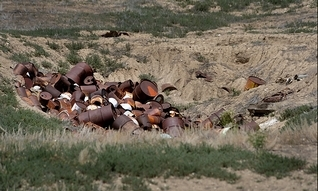02
Oct
EPA Seeks to Disclose Hazardous Pesticide Inert Ingredients
(Beyond Pesticides, October 2, 2009) The Environmental Protection Agency (EPA) announced that it is moving forward with a plan to disclose the identities of all so-called “inert’ ingredients in pesticides, including those that are potentially hazardous. EPA believes this increased transparency will assist consumers and users of pesticides in making informed decisions and will better protect public health and the environment. Pesticide manufacturers typically disclose their inert ingredients only to EPA.
On September 30, 2009, EPA responded to two petitions, one by led by the Northwest Coalition for Alternatives to Pesticides and joined by Beyond Pesticides and 20 other organizations, and a second by certain State Attorneys General, that identified over 350 inert pesticide ingredients as hazardous. The petitioners asked EPA to require these inert ingredients be identified on the labels of products that include them in their formulations.
In its response to petitioners, the agency said, “EPA agrees with the petitioners that the public should have a means to learn the identities of hazardous inert ingredients in pesticide product formulations. The agency believes that increased transparency could lead to better informed decision making and better informed pesticide use.” It continues, “EPA will also be discussing ideas to increase disclosure of all inert ingredients identities to an even greater degree than requested by the petitions.”
The agency anticipates publishing its proposed rulemaking in the Federal Register within the next few months. In it, EPA will discuss ideas for greater disclosure of inert ingredient identities, including inerts associated with various hazards, as well as inerts in general. EPA believes one way of discouraging the use of the more hazardous inert ingredients in pesticide formulations is by making their identities public. In addition to pursuing regulatory action for inert disclosure, EPA is considering encouraging voluntary initiatives to achieve this broader disclosure.
Currently, under the Federal Insecticide, Fungicide and Rodenticide Act (FIFRA), pesticide manufacturers are only required to list the active ingredients in a pesticide, leaving consumers and applicators unaware of the possible toxics present in the inert ingredients of pesticide products they are using, unless the EPA administrator determines that the chemical poses a public health threat. Pesticide manufacturers argue they cannot release information on inert ingredients because they are trade secrets, and if released, their products could be duplicated. Quite often inert ingredients constitute over 95% of the pesticide product. Inert ingredients are mixed into pesticides products as a carrier or sticking agent, and are often as toxic as the active ingredient.
Despite their name, these ingredients are neither chemically, biologically or toxicologically inert. In general, inert ingredients are minimally tested, however, many are known to state, federal and international agencies to be hazardous to human health. For example, the U.S. government lists creosols as a “Hazardous Waste” under Superfund regulations, yet allows these chemicals to be listed as inert ingredients in pesticide products. Creosols are known to produce skin and eye irritations, burns, inflammation, blindness, pneumonia, pancreatitis, central nervous system depression and kidney failure. The pesticide naphthalene is an inert ingredient in some products and listed as an active ingredient in others.
A 2009 study finds that an inert ingredient in the popular herbicide RoundUp, polyethoxylated tallowamine or POEA, is more deadly to human embryonic, placental and umbilical cord cells than the herbicide itself — a finding the researchers call “astonishing.” POEA is a surfactant, or detergent, derived from animal fat. It is added to Roundup and other herbicides to help them penetrate plants’ surfaces, making the weed killer more effective.
According a 2000 report produced by the New York State Attorney General, The Secret Ingredients in Pesticides: Reducing the Risk, 72 percent of pesticide products available to consumers contain over 95 percent inert ingredients; fewer than 10 percent of pesticide products list any inert ingredients on their labels; more than 200 chemicals used as inert ingredients are hazardous pollutants in federal environmental statutes governing air and water quality; and, of a 1995 list of inert ingredients, 394 chemicals were listed as active ingredients in other pesticide products.
For more information about pesticide ingredients, see “What Is a Pesticide?”


















